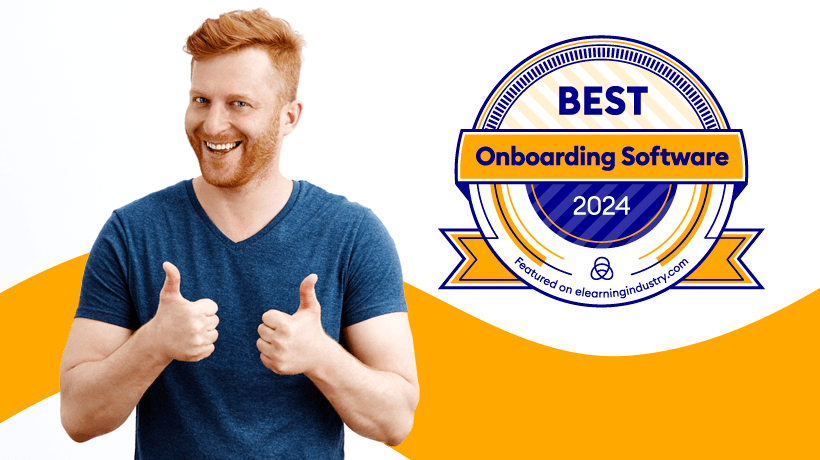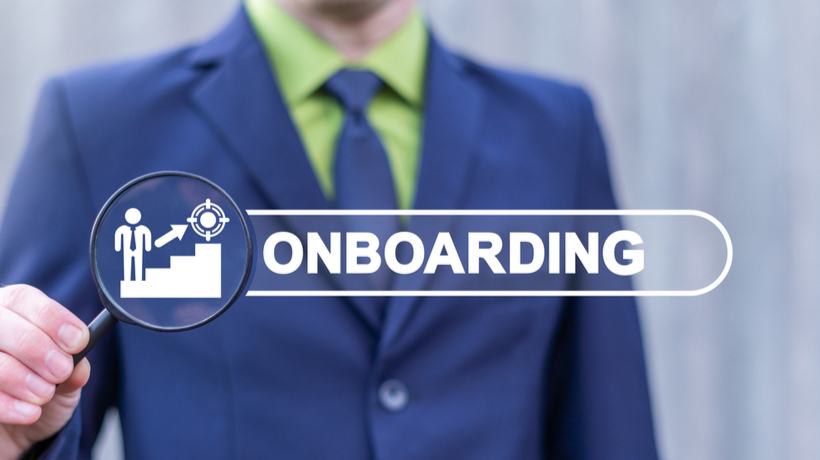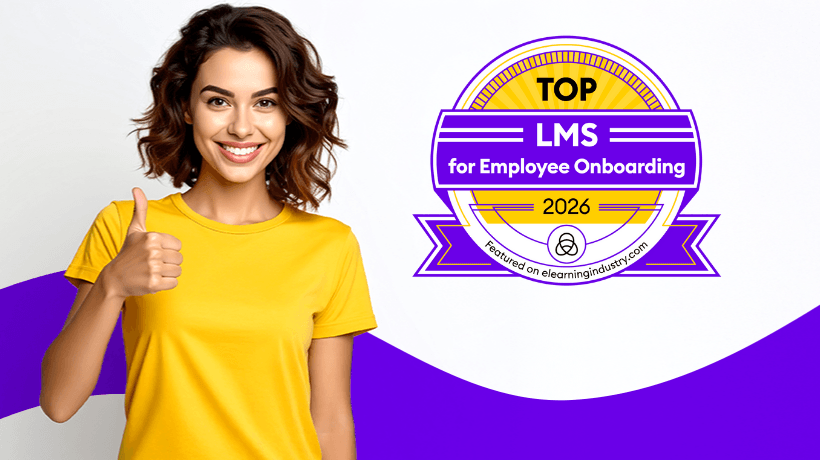Looking For Employee Onboarding Tools Outside The Box
Onboarding tools play an important role in improving the new hire process for both new employees and L&D managers. The average onboarding program includes more than 50 activities new employees must complete [1]. This means L&D managers must find a way to streamline these activities in a way that will both enhance the employee experience and help managers track their progress, too. The employee experience has recently become a major focus point of onboarding, and for good reason. Most new hires decide whether they are going to invest time into a company or start looking for other opportunities within the first few weeks, making onboarding a critical part of retaining new employees. In fact, 47% of companies say their top metric for onboarding success is measuring the one-year turnover rate of new hires [2].
There are 4 categories of onboarding tools that L&D managers can utilize to enhance the onboarding experience for new employees including:
- Chatbots
- Checklists
- Integrated tools
- Specialized tools
Below is a detailed description of how each type of tool works, their benefits and how you can use them to improve your onboarding program.
1. Chatbots
HR chatbots are automated systems that communicate by using text in a chat-like format. The interaction feels a lot like using text messaging or Facebook messenger. Chatbots improve the speed and efficiency of communication. AI doesn’t sleep, and it doesn’t need to take sick days. Chatbots can answer questions almost instantly 24 hours a day helping new employees get accurate information whenever they need it. New hires can ask questions whenever they need to, without disrupting the workflow of others. This saves everyone time and eliminates the frustrations of misinformation. Some onboarding processes and paperwork like W2s, enrolling in benefits or emergency contact forms can be confusing. AI chatbots can walk new employees through each step and answer any questions they may have on the spot. Chatbots can assist with employee training. They can be used in simulations to guide employees through the steps they need to take, and they can give unbiased feedback instantly. Overall chatbots improve the onboarding process by giving new hires a resource to find information right when they need it. Having this information at their fingertips speeds up the rate of competency and improves ROI.
2. Checklists
Onboarding checklists show a detailed list of the upcoming onboarding activities, who will be involved in them and when they need to be completed. This puts new hires and their managers on the same page. The manager can track new employees' progress and the employees know what is expected of them. The best onboarding checklists are detailed and include information about tasks that need to be completed such as:
- Setting up a new hires desk and email
- Team introductions
- Meetings with supervisors and what is to be discussed
- Expectations and goals for the next week, month, etc.
- Training to be completed
What is included in the onboarding process and checklist varies between industries and roles, but the idea is to provide a guide for new hires and their managers to follow. Providing clear guidelines and letting new hires what to expect improves the overall onboarding experience.
3. Integrated Tools
Integrated tools are the all-purpose tools for HR. They aim to help manage everything from training to benefits all in one place. They offer tools specific to onboarding such as checklists and digitization of paperwork, but they also handle other tasks that are not related to onboarding such as:
- Payroll
- Attendance
- E-mailing offer letters and interview invitations
- Performance evaluations
These tools aim to be the go-to tool for all things HR-related. HR tasks and onboarding tasks are often related and intertwined. Keeping all the tools together makes the onboarding process more efficient.
4. Specialized Tools
These tools are designed specifically to assist L&D managers with the onboarding process. This is an all in one tool, but they are different than integrated tools because they specialize only in onboarding. They offer several tools aimed to improve onboarding in one system. They commonly offer:
- Digitization of paperwork
- Customizable checklists
- Communication tools
- Quiz builders
- The ability to add your own training content
The idea is to keep everything related to onboarding in one place making the process quick and easy for both employees and managers. This improves speed and efficiency.
Bonus Free Tools
There are various free tools that can be used to assist with different onboarding tasks. Each has a unique offering. These tools are especially helpful when you are working with a tighter L&D budget. Some free tools you can find that assist in streamlining the onboarding process are:
- Group chat tools
These are helpful for the whole team, but they are specifically useful when onboarding remote workers. Evernote workflow is becoming a popular free tool. This chat tool allows users to chat and share content seamlessly. - Digital project management tools
These tools allow teams to communicate and collaborate more quickly. These tools can help L&D managers keep track of new hire activities and projects. Trello is a project management tool that teams can use to manage projects. This platform allows users to create teams, lists, and boards so you can stay organized. - Onboarding checklist templates
The requirements of onboarding activities can vary depending on the role and department new hires are in. Using a free template gives managers a layout and design they can edit and adjust. Process.st provides free customizable checklists for onboarding and many other processes. - Programs that digitize paperwork
Onboarding involves quite a bit of paperwork. Providing digital copies for new hires allows them to fill out and sign the required documents online before their first day. Scanners can be expensive, but apps like Scanbot allow you to digitize any document you need with your smartphone. Each of these free tools improves the onboarding process in some way whether it improves communication or speeds up a task.
Conclusion
It has been proven that providing new hires with an excellent onboarding experience is good for business. Creating a positive experience is easier when you use tools that streamline the process and improve communication.
5 types of tools that help L&D professionals improve onboarding:
- Chatbots improve communication and speed up the onboarding process.
- Checklists provide a clear map of onboarding activities so employees know what to expect.
- Free tools help L&D managers improve efficiency.
- Integrated tools merge onboarding and HR tasks in one place making the process more manageable.
- Specialized tools provide tools specifically created for onboarding in one place aiming to streamline the process.
Using the right tools will help you create an onboarding program that improves employee retention rates, speeds up the rate of competency and improves your ROI. Discover all the best practices on transforming the new hires into productive members of your organization! Download the eBook The Definitive Guide To Onboarding Programs to go beyond the onboarding tools every L&D manager needs to.
References:
1. 10 Employee Onboarding Statistics you Must Know in 2019
2. Talent Pulse—Onboarding Outcomes: Fulfill New Hire Expectations







